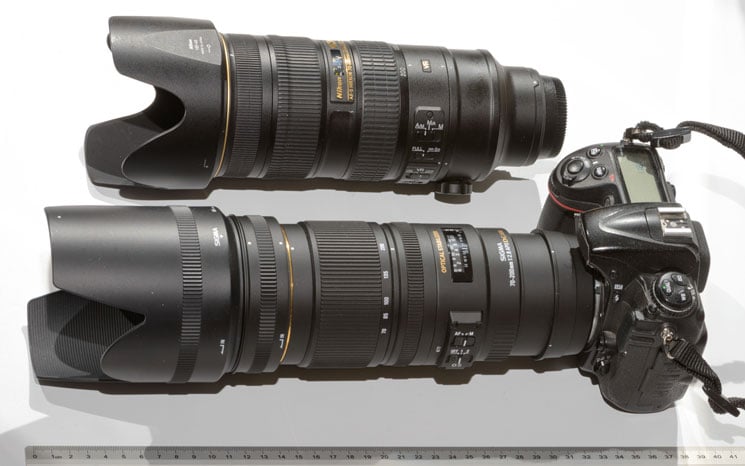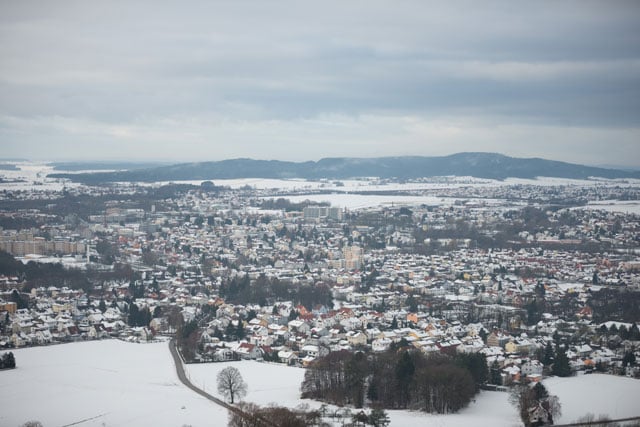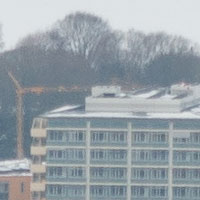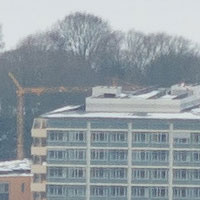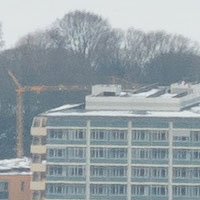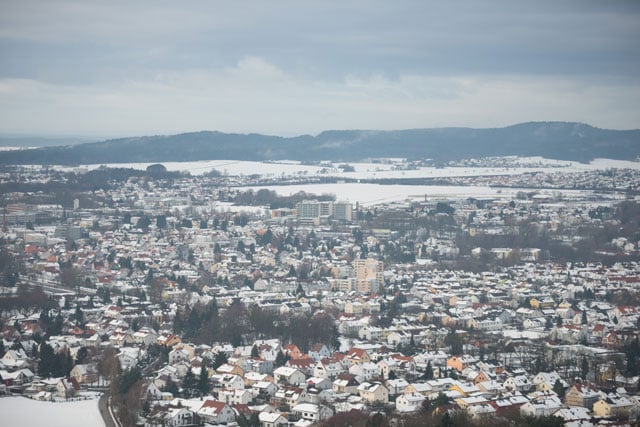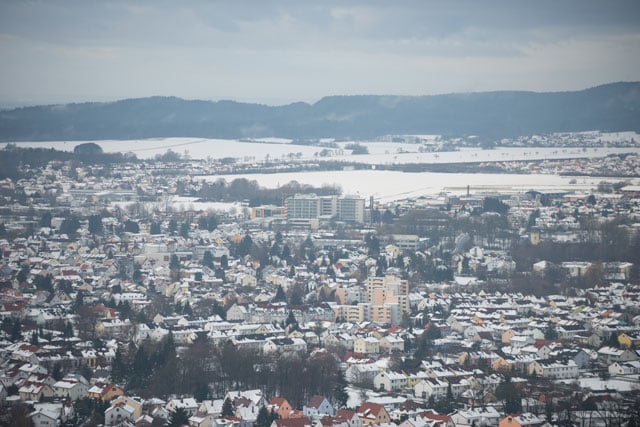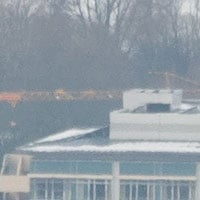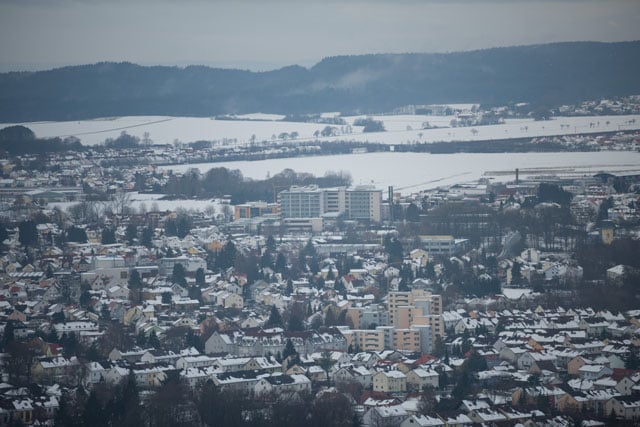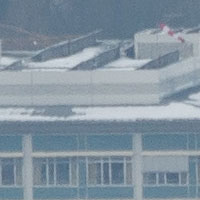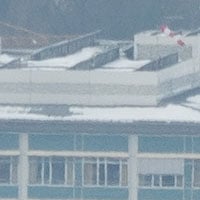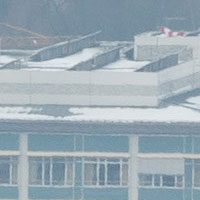Sigma 70-200mm f2.8 OS review
-
-
Written by Thomas
Intro
The Sigma 70-200mm f/2.8 EX DG OS HSM is the company’s latest 70-200mm and its first with an image stabilizer. It covers a 2.9x zoom-range and was announced February 2011. Sigma offers this lens with Canon, Nikon, Sony, Pentax and Sigma mounts and it is cheaper than any other stabilized 70-200/2.8 zoom.
While primarily designed as a general purpose bright tele-zoom for full-frame models, you could equally use the Sigma 70-200/2.8 OS on a cropped-frame body where it gives you an equivalent 105-300mm coverage plus future-proofing should you upgrade to a full-frame body at a later date. Complement this lens with any 24-70/85mm standard zoom and you can seamlessly cover a 8.3x zoom-range from fairly wide-angle to a decent tele with only two lenses.
In this review I’ll put the Sigma 70-200mm f/2.8 OS zoom to the test on a 36MP Nikon D800 body to see whether the lens is a good match for the highest resolution full-frame DSLR – and also to find out how it fares compared to Nikon’s own alternative.
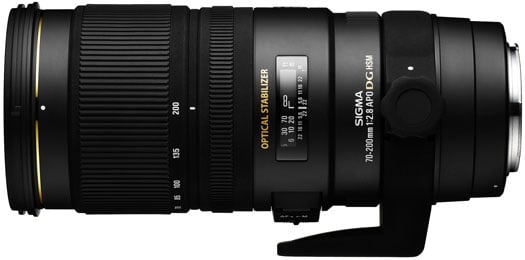 |
Facts from the catalog
As usual I’ll have a look at the technical data first. I’ve rated the features with a [+] (or [++]), when it’s better than average or even state of the art, a [0] if it’s standard or just average, and [-] if there’s a disadvantage. To give you a better insight as to how this lens compares to its competitor from Nikon I’ve supplied data for the Nikon AF-S 70-200/2.8G VR II too, denoted here just as the “Nikon” for short.
 | |
Size (diam. x length): 86 x 198 mm (3.4×7.8 in.) compared to 87 x 206 mm (3.4 x 8.1 in.) for the Nikon. The lens-hood adds a considerable amount especially once you mount the additional APS-C extender that makes the hood more effective on bodies with APS-C or DX sensors. Mount everything on a DSLR and you’re almost at a total length of 390mm. The lens does not change length during zooming or focusing. [0]
Weight: 1,430 g (50.4 oz.) vs. 1,540 g (3.4 lb.) of the Nikon. Together with a full frame body you’ll be schlepping 2.3kg around. [0]
Optics: 22 elements in 17 groups compared with 21/16 elements/groups for the Nikon. 17 groups have 34 air/glass-surfaces that produce a lot of opportunities for flares and ghosts. The cross-section shows a lot of special elements: five low dispersion elements. [0]
Closest focus distance/max. magnification: 1.4 m / 1:8. In my test I was able to get down to 1:7.4. This meager magnification also means that the effective focal length shrinks some 30% when focusing close. Similar to what the Nikon achieves. [0]
Filter-thread: 77mm = standard with most pro-lenses [+]
IS: Yes, Sigma finally upgraded their 70-200/2.8 design to include the OS image stabilization. Nikon is already on their second generation. Now Tamron will be last to the stabilized party. At focal lengths beyond 100mm and with today’s high resolution sensors image stabilization is an indispensable feature. [+]
AF: HSM (hyper sonic motor), so it does work on D60/3×00/5×00-bodies, manual-focus override by turning the focus ring [+]
Covers full frame/FX or smaller = very good [+]
Price: around 950 EUR new (incl. 19% VAT) = adequate. All alternatives are more expensive: Those from Sony, Canon and Nikon claim double the amount. See photo above for the latest pricing. [+]
Comes with a very nice semi-soft lens-case that is well padded, the lens-shade plus a special APS-C extender is included, reversible for transport, and the lens-caps finally resemble the standard Nikons and can be mounted in any of three orientations. [+]
Distance information is relayed to the camera, so the Nikon body can do all the advanced exposure-related stuff with this lens. But this is true for all alternatives too. [+]
Aperture ring = no, just like all competitors. [0]
Sealing: no! No rubber grommet at the lens-mount. So you should protect the lens from drizzle. [0]
The score in the “features-department” is 0[-]/6[0]/7[+]. There are no minus-points and the big pluses are the image stabilization and the low price. The lens is even cheaper than the stabilized 70-200/4.0 zooms from Nikon and Canon! So if the lens delivers solid performance it should be a winner.
Motivation
:
A stabilized 2.9x zoom with a focal range of 70-200mm is an excellent complement to a 24-70mm standard zoom on an FX body. The Sigma has a constant f2.8 aperture that is sought after by photographers who need to capture fast moving action or the blur the backgrounds on portraits and close-range sports. Its zoom range is flexible enough to capture most action that is a little further away: A person can be captured full-height in landscape orientation from around 17m distance on a full-frame body (or from 25m distance on a DX/APS-C-body).
Two stabilized 70-200mm f/2.8 zooms for Nikon DSLRs |
| Sigma 70-200/2.8 OS with APS-C extender mounted (front/bottom) vs. Nikon 70-200/2.8G VR II (back/top) |
Alternatives
:
– Nikon’s AF-S VR 70-200mm 2.8G ED VR II is the instrument of the pros with a sturdy built and a price to match: currently around 1800 EUR.
– Nikon’s AF-S VR 70-200mm 4.0G ED VR is a very attractive alternative to its big brother – see my Nikon 70-200mm f4 review. Around 1200 EUR.
– The not yet released Tamron SP AF 70-200mm 2.8 Di VC USD: The cheapest listing of around 1600 EUR certainly is not a real street price yet.
Testing: Longitudinal Chromatic Aberration
With lenses offering an aperture of f2.8 or larger I test for longitudinal CA (loCA, a.k.a. “axial color” or “bokeh CA”). The Sigma 70-200/2.8 OS shows some slight magenta coloration on the left (foreground) and greenish hues on the right (background). But this is practically negligible. Stopping down reduces the effect and also reveals that this lens has no focus shift to speak of.
Sigma 70-200mm f/2.8 OS Longitudinal Chromatic Aberration (loCA) |
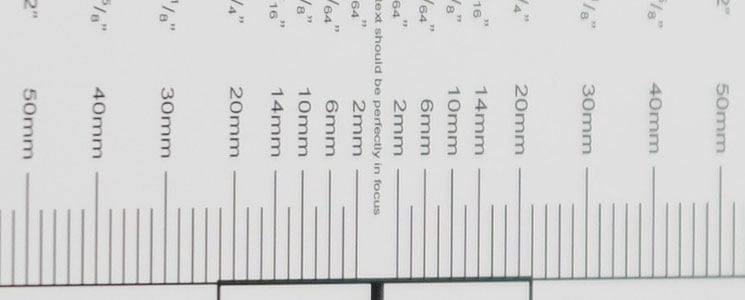 |
| 100% crop, 200mm, f2.8, left=closer, right=farther away |
Sharpness and contrast
Let’s have a look at the theoretical performance (MTF-charts) at the wide and the long end first:
Sigma 70-200mm f/2.8 OS MTF | ||
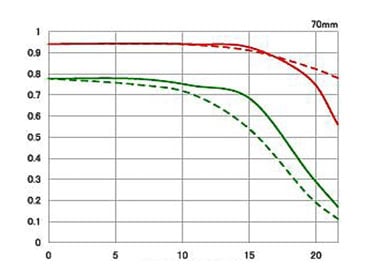 | 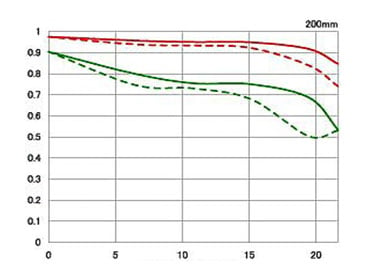 | |
| at 70mm, f2.8 | at 200mm, f2.8 | |
These charts show the lens-performance at the largest aperture f2.8. Higher values are better and the closer the dotted and the continuous lines of each color are together the less astigmatism (= resolution depends on the orientation of the test-pattern) the lens has. The x-axis displays the distance from the optical axis (=center of the sensor) in mm. I’ll show you the real-life performance at 4 mm (center), 13 mm (DX-corner), and 20 mm (FX-corner) on a D800.
From the charts I’d expect the lens to perform on a pretty high level regarding overall contrast but with limited sharpness at the short end outside the DX image-circle. Astigmatism seems well controlled. But let’s see how this theoretical performance translates into real life results in the sharpness test based on Siemens-stars.
What follows are near-center results (first column) followed by DX-corner results and FX-corner results on a D800. The D800 results from the DX-corner should be a very good approximation for performance on a 16MP DX sensor (like the D7000), because the pixel-pitch of both sensors are the same. But differences in the AA-filter and micro-lens-design of a D800 and a D7000 might yield different end-results.
Processing was done in Lightroom 4.3 from RAW at camera standard settings. Noise-reduction is set to 0, sharpening to 70/0.5/36/10, with no extra tone, color, or saturation-adjustment. White-balance was adjusted to a neutral white and I did some exposure compensation to make the brightness match. CA-removal is ON.
The following are all 100% crops!
Let’s have a look at the performance at 70mm first:
Sigma 70-200mm f/2.8 OS with Nikon D800 100% crop from center | Sigma 70-200mm f/2.8 OS with Nikon D800 100% crop from DX-corner | Sigma 70-200mm f/2.8 OS with Nikon D800 100% crop from FX-corner | ||
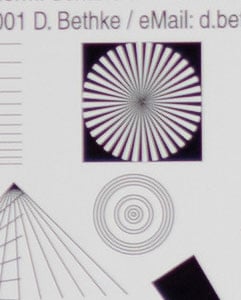 | 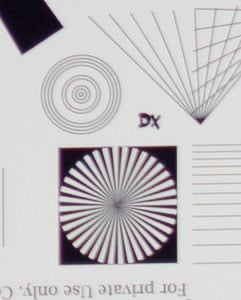 | 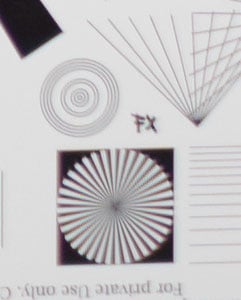 | ||
70mm, f2.8, 100 ISO | 70mm, f2.8, 100 ISO | 70mm, f2.8, 100 ISO | ||
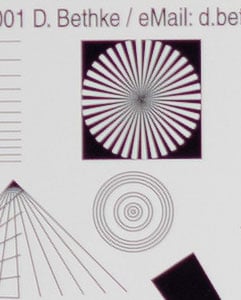 | 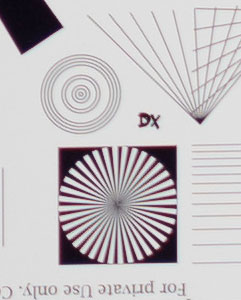 | 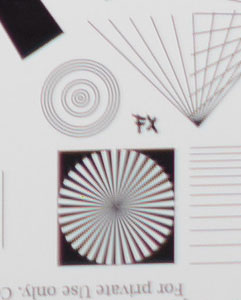 | ||
70mm, f4.0, 100 ISO | 70mm, f4.0, 100 ISO | 70mm, f4.0, 100 ISO | ||
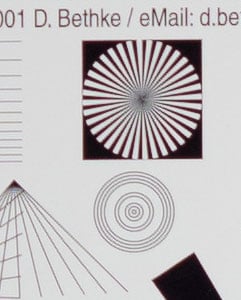 | 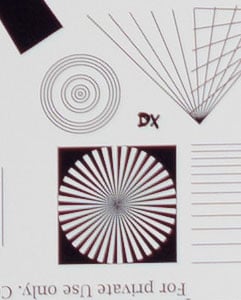 | 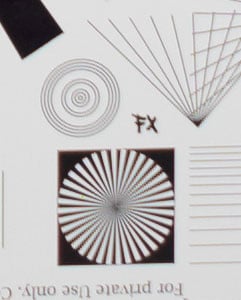 | ||
70mm, f5.6, 100 ISO | 70mm, f5.6, 100 ISO | 70mm, f5.6, 100 ISO | ||
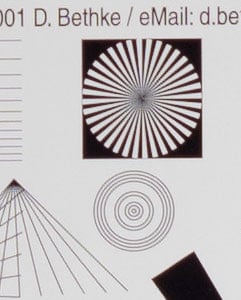 | 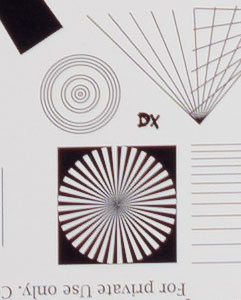 | 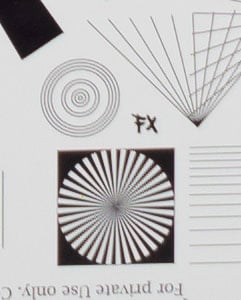 | ||
70mm, f8.0, 100 ISO | 70mm, f8.0, 100 ISO | 70mm, f8.0, 100 ISO | ||
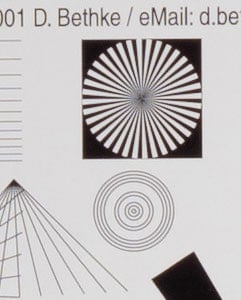 | 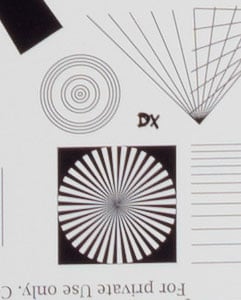 | 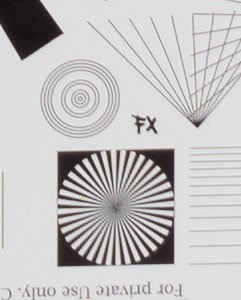 | ||
70mm, f11, 100 ISO | 70mm, f11, 100 ISO | 70mm, f11, 100 ISO |
These 100% crops directly from a 36MP D800 sensor show that this lens is a tad soft wide open in the center and DX-corner. But from f4.0 on it performs on a very good level in the DX image-circle. The FX-corner shows quite some resolution even at f2.8 but is hampered by residual spherical aberration and astigmatism until you stop down to f8 where the lens performs on a very good level across the complete image-circle.
Performance at 105mm:
Sigma 70-200mm f/2.8 OS with Nikon D800 100% crop from center | Sigma 70-200mm f/2.8 OS with Nikon D800 100% crop from DX-corner | Sigma 70-200mm f/2.8 OS with Nikon D800 100% crop from FX-corner | ||
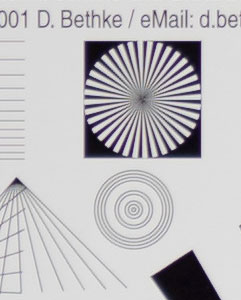 | 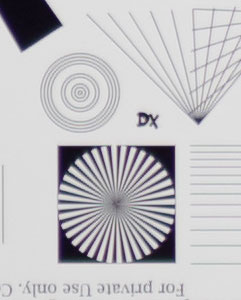 | 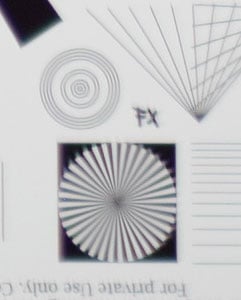 | ||
105mm, f2.8, 100 ISO | 105mm, f2.8, 100 ISO | 105mm, f2.8, 100 ISO | ||
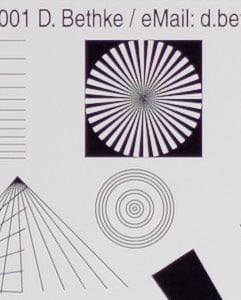 | 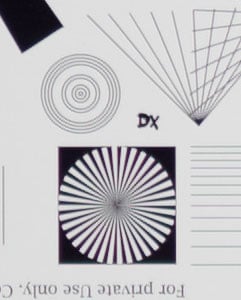 | 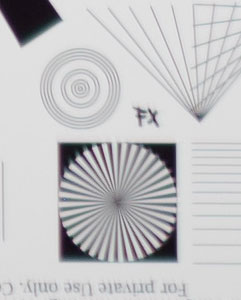 | ||
105mm, f4.0, 100 ISO | 105mm, f4.0, 100 ISO | 105mm, f4.0, 100 ISO | ||
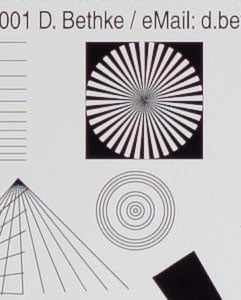 | 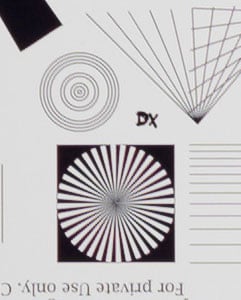 | 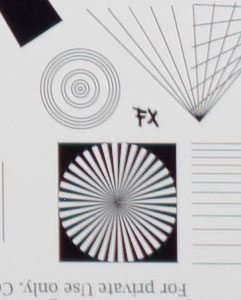 | ||
105mm, f5.6, 100 ISO | 105mm, f5.6, 100 ISO | 105mm, f5.6, 100 ISO | ||
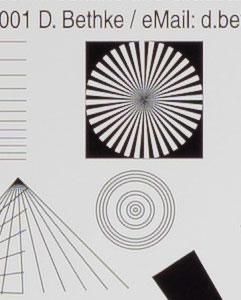 | 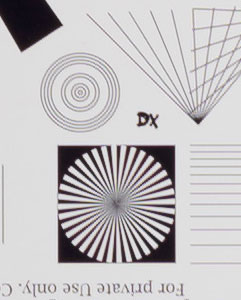 | 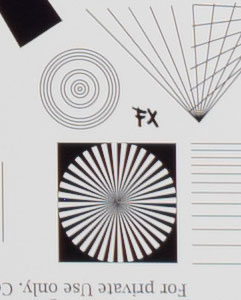 | ||
105mm, f8.0, 100 ISO | 105mm, f8.0, 100 ISO | 105mm, f8.0, 100 ISO | ||
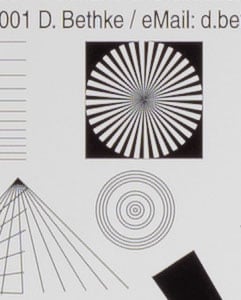 | 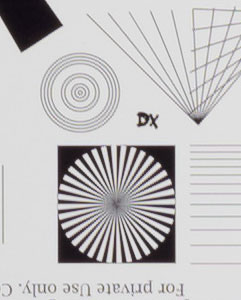 | 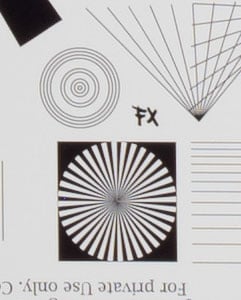 | ||
105mm, f11, 100 ISO | 105mm, f11, 100 ISO | 105mm, f11, 100 ISO |
There is a similar performance at 105mm with improved center resolution at f2.8 and less astigmatism in the FX-corner. But unfortunately the haloing effect of residual spherical aberration has increased considerably.
Performance at 150mm:
Sigma 70-200mm f/2.8 OS with Nikon D800 100% crop from center | Sigma 70-200mm f/2.8 OS with Nikon D800 100% crop from DX-corner | Sigma 70-200mm f/2.8 OS with Nikon D800 100% crop from FX-corner | ||
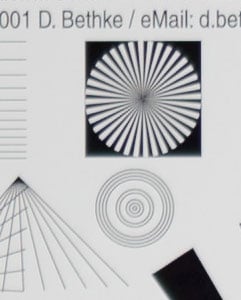 | 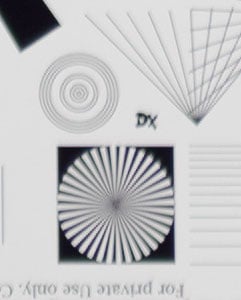 | 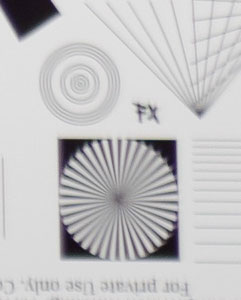 | ||
150mm, f2.8, 100 ISO | 150mm, f2.8, 100 ISO | 150mm, f2.8, 100 ISO | ||
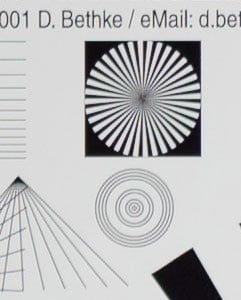 | 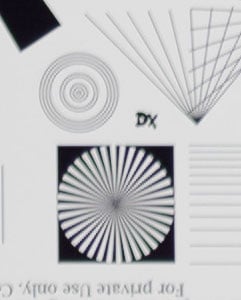 | 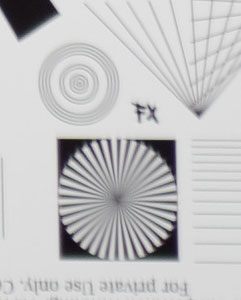 | ||
150mm, f4.0, 100 ISO | 150mm, f4.0, 100 ISO | 150mm, f4.0, 100 ISO | ||
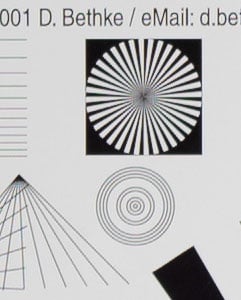 | 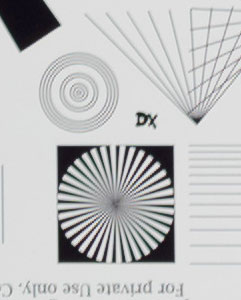 | 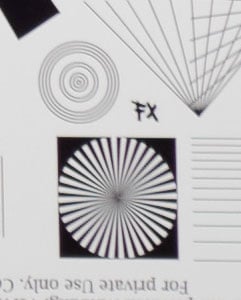 | ||
150mm, f5.6, 100 ISO | 150mm, f5.6, 100 ISO | 150mm, f5.6, 100 ISO | ||
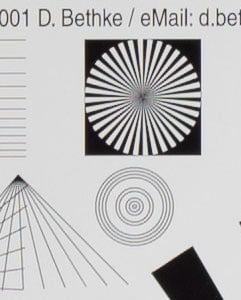 | 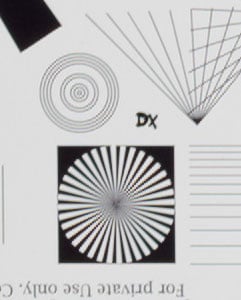 | 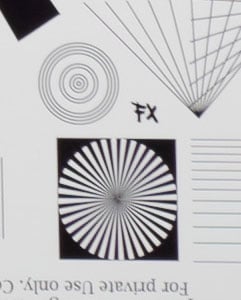 | ||
150mm, f8.0, 100 ISO | 150mm, f8.0, 100 ISO | 150mm, f8.0, 100 ISO | ||
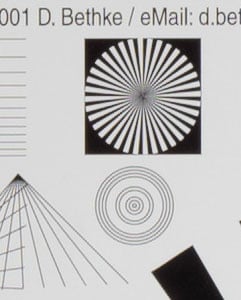 | 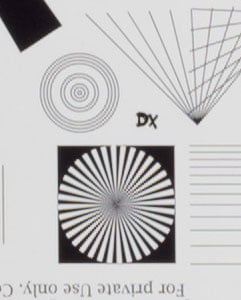 | 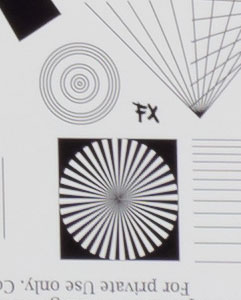 | ||
150mm, f11, 100 ISO | 150mm, f11, 100 ISO | 150mm, f11, 100 ISO |
At 150mm there is a loss of performance: Astigmatism creeps back into the FX-corner and haloing starts to mar the DX-corner too. And even the center suffers from spherical aberrations. You need to stop down to f8 to get rid of most of these effects.
Performance at 200mm:
Sigma 70-200mm f/2.8 OS with Nikon D800 100% crop from center | Sigma 70-200mm f/2.8 OS with Nikon D800 100% crop from DX-corner | Sigma 70-200mm f/2.8 OS with Nikon D800 100% crop from FX-corner | ||
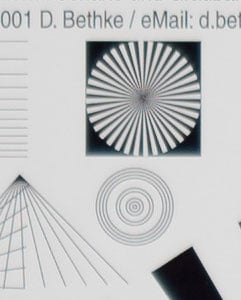 | 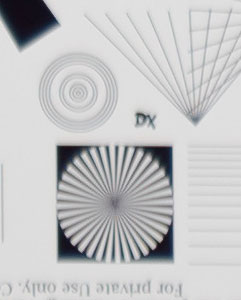 | 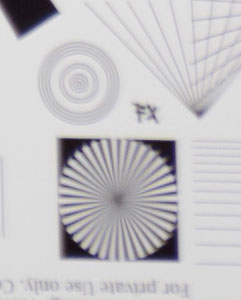 | ||
200mm, f2.8, 100 ISO | 200mm, f2.8, 100 ISO | 200mm, f2.8, 100 ISO | ||
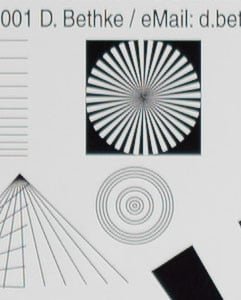 | 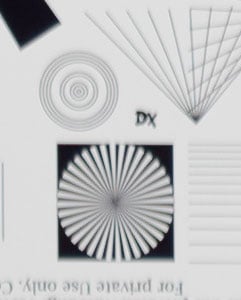 | 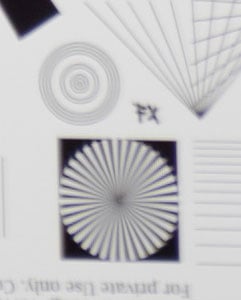 | ||
200mm, f4.0, 100 ISO | 200mm, f4.0, 100 ISO | 200mm, f4.0, 100 ISO | ||
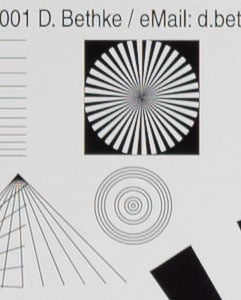 | 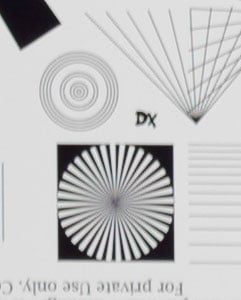 | 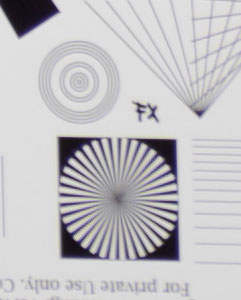 | ||
200mm, f5.6, 100 ISO | 200mm, f5.6, 100 ISO | 200mm, f5.6, 100 ISO | ||
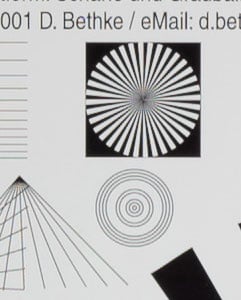 | 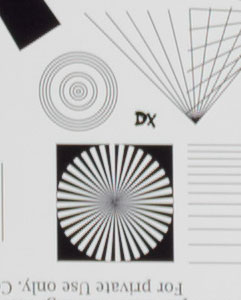 | 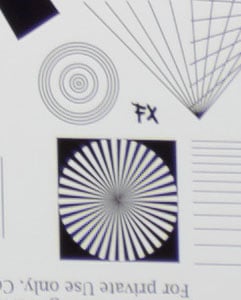 | ||
200mm, f8.0, 100 ISO | 200mm, f8.0, 100 ISO | 200mm, f8.0, 100 ISO | ||
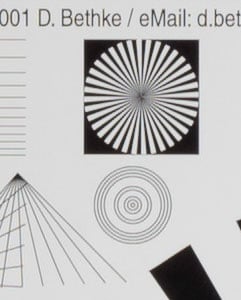 | 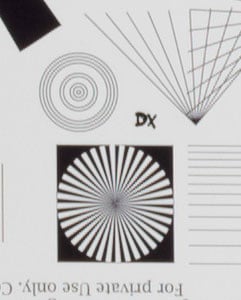 | 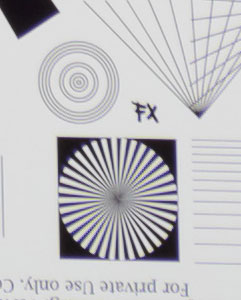 | ||
200mm, f11, 100 ISO | 200mm, f11, 100 ISO | 200mm, f11, 100 ISO |
200mm clearly is the weak end of this lens. Within the DX image-circle the resolution at f2.8 is usable but the overall contrast suffers pretty heavily from haloing. And while f4.0 brings the center back to good performance the DX-corner needs at least f5.6 to satisfy and even benefits from stopping down to f11. Same holds true for the FX-corner. So if you need good performance across the (full) frame at 200mm stop down to f8.
So the results from the test-shots are somewhat contrary to the expected performance from the MTF-charts, where the lens should perform better at 200mm than at 70mm focal length.
Performance at large distances
The Siemens-star test-targets are shot at a distance of 40x focal length (i.e. at 4m for 100mm f.l.). But performance of lenses also depends on the shooting distance. Therefore I do another series of test-shots of a landscape dubbed the “Unremarkables” where you can measure distances in km, not meter. Processing was done in Lightroom 4.3 from RAW at Adobe Standard settings. Noise-reduction is set to 0, sharpening to 70/0.5/36/10, with no extra tone, color, or saturation-adjustment. There’s no tinkering with vignette-control so you see it here as it is produced by the lens. Focus was acquired at the largest aperture in contrast-based AF and not changed for other apertures.
You can click on each image to access the large original. Please respect our copyright and only use those images for personal use.
The main image shows the complete scene at f2.8 to give you an impression of the angle of view and to judge vignetting. This is followed by one row of 100% crops at different apertures each from the middle and the right (FX-)border. Let’s start with 70mm focal length:
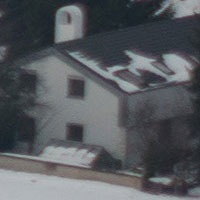 | 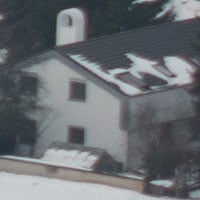 | 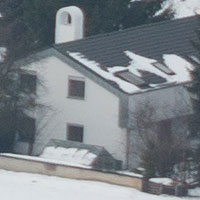 | ||
70mm, f2.8, 200 ISO, border | 70mm, f4.0, 200 ISO, border | 70mm, f8, 200 ISO, border | ||
It pays to stop down to f4 for better center sharpness and overall contrast. It also reduces vignetting visibly. For optimal performance at the FX-border stop down to f8.
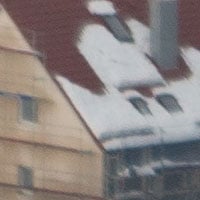 | 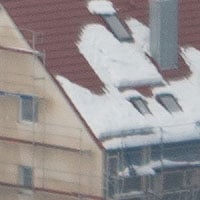 |  | ||
105mm, f2.8, 200 ISO, border | 105mm, f4.0, 200 ISO, border | 105mm, f8, 200 ISO, border | ||
Same story at 105mm, albeit with less vignetting. Center-performance is pretty good at f4 but for optimum border performance stop further down.
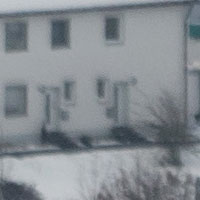 |  |  | ||
150mm, f2.8, 200 ISO, border | 150mm, f4.0, 200 ISO, border | 150mm, f8, 200 ISO, border | ||
At 150mm focal length the center is good to go from f4.0 onwards but good border performance needs stopping down to at least f5.6.
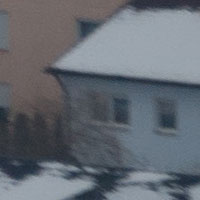 |  | 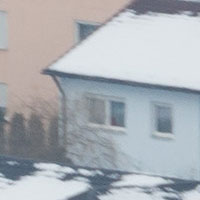 | ||
200mm, f2.8, 200 ISO, border | 200mm, f4.0, 200 ISO, border | 200mm, f8, 200 ISO, border | ||
At 200mm the lens exhibits still quite some vignetting and the center performance now profits from stopping down even beyond f4. And if you want to produce a satisfying performance in the corners of a high-resolution FX sensor you need to stop down even beyond f8. So these shots confirm that 200mm is the weak end of this lens.
Summing up the performance from the Siemens-star test-shots and the Unremarkables it is clear that this lens performs good to very good in the center even wide open or stopped down a little to f4. On a DX-sensor the border-/corner-performance is quite good too up to 130mm. The greatest challenge are the outer areas of a 36MP FX sensor – which comes as no surprise. Stopping down to f5.6 can produce good to very good results at focal lengths shorter than 130mm, even at 150mm the results are quite usable. But at 200mm focal length f8 is needed to lift the FX-corner performance to the same level.
 The Sigma 70-200mm f/2.8G OS delivers a decent overall performance, especially at focal lengths below 130mm. The center never disappoints throughout the focal range but the corners need some stopping down for good performance at focal lengths above 130mm. The resolving-power in the image-center is even good enough to use a tele-converter should you need to reach beyond the 200mm focal length. The image stabilization and the AF are OK but nothing to rave about, and a maximum magnification of around 1:8 and the size and weight does not differentiate this zoom from its competition.
The Sigma 70-200mm f/2.8G OS delivers a decent overall performance, especially at focal lengths below 130mm. The center never disappoints throughout the focal range but the corners need some stopping down for good performance at focal lengths above 130mm. The resolving-power in the image-center is even good enough to use a tele-converter should you need to reach beyond the 200mm focal length. The image stabilization and the AF are OK but nothing to rave about, and a maximum magnification of around 1:8 and the size and weight does not differentiate this zoom from its competition.